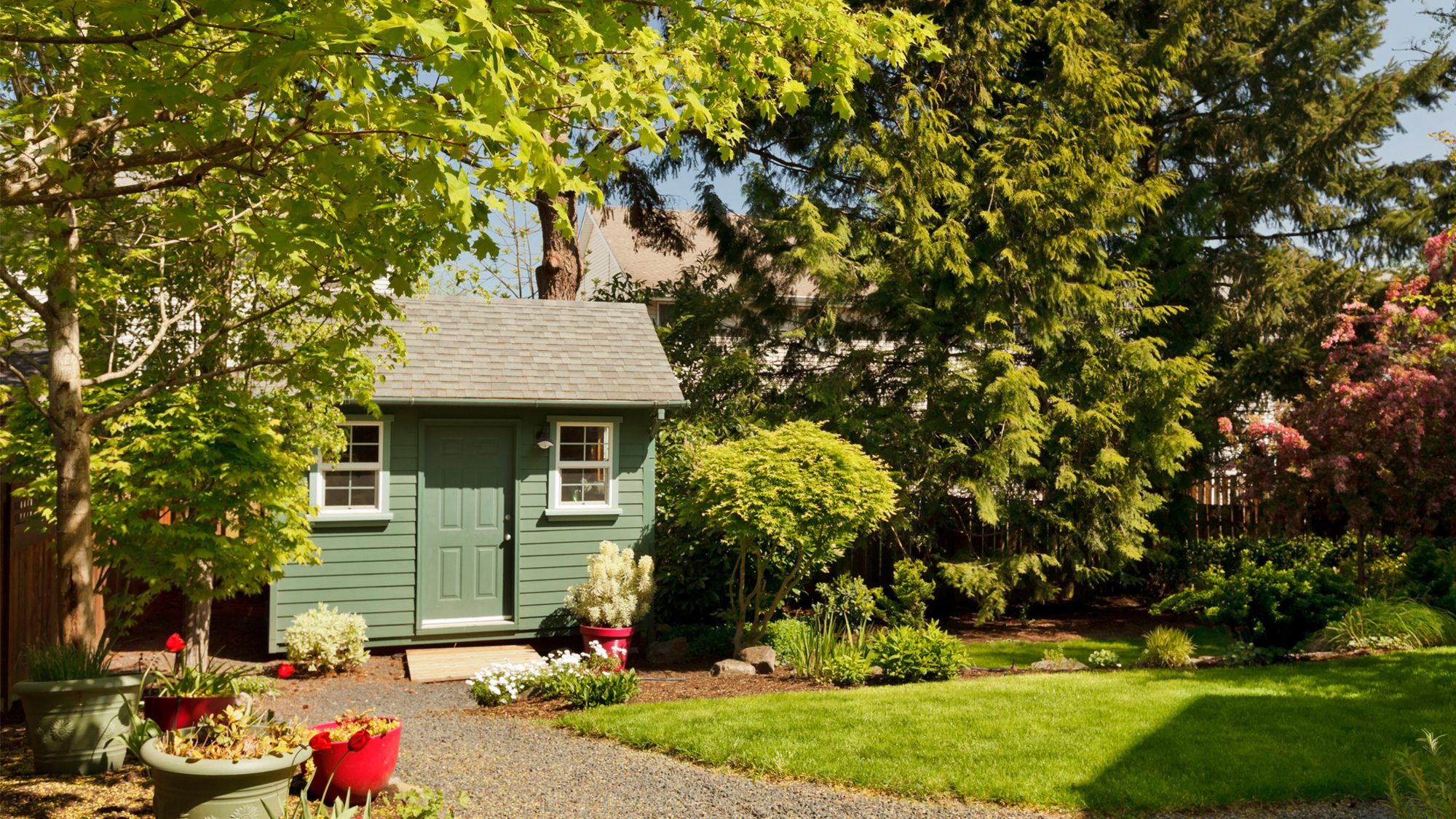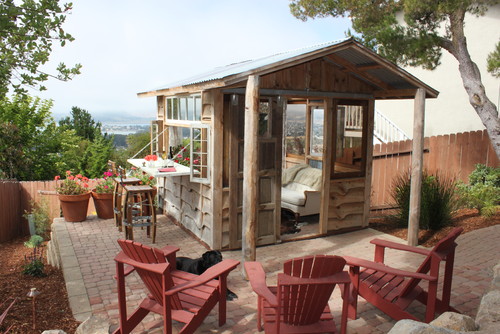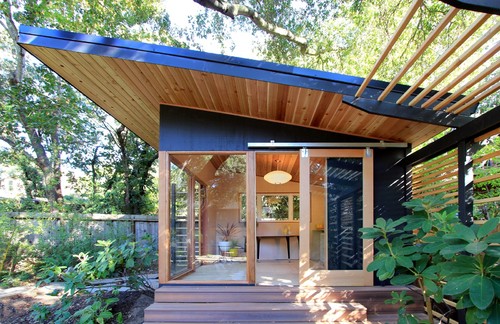
chuckcollier/iStock
There’s something awfully appealing about having a livable shed in your backyard. These free-standing structures—also known as she sheds or prefab sheds—give homeowners the opportunity to dream big and create their ultimate chill zone.
“Sheds and other types of detached additions are a relatively easy way to add usable living space to the property” says Dan DiClerico, a home expert at Home Advisor.
But livable sheds have the potential to frustrate their owners, or to cost a pretty penny—sometimes unnecessarily. Why? Let’s take a look at some of the blunders that can arise while building a livable shed in your backyard.
Failing to tailor it to your needs
Ask yourself what the livable shed will be used for.
“Is it a quiet, comfortable place where you can have your favorite cup of coffee and catch up on your reading? If so, you’ll probably need a small counter area to make your coffee,” says Derek Stearns, an outdoor design expert who served as a host on “Indoors Out” on the DIY Network.
Other amenities like a refrigerator and a sink can help ensure you don’t have to run back and forth between the shed and the house.
Ultimately, your livable shed should be tailored to you and your interests.
“If you’ve always wanted pink walls and the family vetoed it, this is the time to pull out the fuchsia,” says Rebecca Chambliss, creative director at Curated Design in Los Angeles and a real estate associate at Compass.
Not pulling the proper paperwork
DiClerico says in most municipalities you’ll need to secure a building permit, especially if you plan to include electricity and running water in your shed.
“If you’re working with a contractor, have them pull the permit. They’ll be familiar with the working of the building department,” he says.
But permits aren’t all you’ll need—a date with the local zoning board might also be in your future.
“Typical restrictions include building within 15 feet of the rear property line and within 7.5 feet of the side,” DiClerico explains. So if you don’t pull all of the necessary paperwork, you may encounter problems when selling your home, he explains.
“In a worst-case scenario, you might actually have to remove the shed if it’s found to be violating any local building codes.”
Picking a bad location
There are location decisions that you’ll need to make, too, and missteps in this area could cause big problems.
“It’s important to choose a location that will stay relatively dry, ideally a high point on the property,” says DiClerico. “Putting the shed at the bottom of a hill is a huge mistake, since the ground will often be wet, compromising the foundation and causing mildew and rot on any wood parts of the structure.”
Failing to consider resale value
If you build the shed correctly, it could add value to your home. “However, if it clashes or has structural issues, a real estate agent might suggest tearing it down to preserve the overall look and feel of the home,” says Courtney Keene, director of operations at MyRoofingPal.
Skipping the foundation
Does a livable shed really need a foundation? Absolutely!
Without a foundation, DiClerico says, your shed runs the risk of settling unevenly into the ground, which could lead to crooked floors and walls and overall instability.
“We recommend a floating slab foundation for sheds, which typically involves a 6-inch slab or reinforced concrete that sits directly on top of the ground, creating a firm, stable platform for the shed,” he says.
Grading is also an important step to direct the flow of runoff water.
“If not, when it rains, you may have to walk through puddles to get to the she shed,” says Gordon Jones, owner of G.I. Jones Home Inspection, in San Antonio, TX. “Make sure the grading is appropriate around the shed so that it won’t have a moat around it.”
Neglecting lighting
If your livable shed is going to be your haven to hunker down in and dive in to a good book, you’d better believe you need good lighting.
Denise Morrison of Denise Morrison Interiors, in Newport Beach, CA, suggests adding recessed ceiling lights or a stylish pendant light and plenty of lamps.
“If your she shed has existing garage doors, I’d consider replacing them with large glass and iron doors to flood your space with natural light,” Morrison says.
Securing the livable shed
Regardless of the location, don’t forget that you need to be able to keep your shed safe. If it’s visible from the street, it might pique a potential burglar’s interest. But even if it’s completely hidden by your house, you’ll want to secure it just like you would your main abode, with locks on the door and windows.
The post How to Build a Livable Shed in Your Backyard Without Going Nuts appeared first on Real Estate News & Insights | realtor.com®.


No comments:
Post a Comment